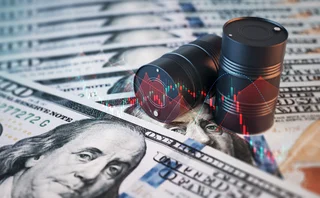Sponsored Q&A: BNP Paribas
Hedging commodity exposure

How have mining and producer hedging strategies changed over the last few years?
Frederic Hervouet, Head of Commodity Derivatives for Asia Pacific, BNP Paribas: 2008 was a difficult year for the mining industry with prices tumbling, and it demonstrated how much demand for hedging strategies has grown in the past two years. Despite the lack of credit appetite from a lot of banks for this industry, at BNP Paribas we see it as a key area of focus. In the past year, we have seen an increasing number of projects on the structured finance side of the business and, with the level of gold at more than $1,300 now and even at $1,400 or $1,500 in Australian dollars, a lot of Greenfield projects have been appearing. We therefore see the industry moving towards a risk management hedging model, with more junior mining or medium-sized mining companies also looking at hedging to manage their exposure.
Do you see mining and producing companies adopting more exotic trading for their hedging strategies in the future?
Frederic Hervouet: Exotic hedging strategies are popular with energy markets producers, but oil markets work differently from the mining industry, where you have two types of mining: precious and base metals. For gold producers, prices have been shooting up for the last eight to nine years and, for base metals, miners’ prices have also recovered, whereas in energy markets the prices have been more range-bound this year.
At BNP Paribas, we focus on simple structures, while of course also offering structured solutions with various types of options (collars, etc.). We try to avoid the more exotic concepts of knockouts or double knockouts and accumulator solutions. With regard to financing – either trade finance or structured debt – it is also generally better to keep structures as simple as possible.
Looking at government hedging strategies – maybe to hedge against inflation – how do Asian governments compare to their Western counterparts in terms of hedging strategy?
Frederic Hervouet: In order to meet the particular hedging strategies of our customers, BNP Paribas offers a futures business for brokering and clearing, as well as an over-the-counter (OTC) business. Some markets, such as China and Vietnam, are quite heavily regulated with regard to OTC hedging, so clients in these countries are turning to us for clearing services. In many Asian markets we are also seeing a tendency for more OTC-cleared business, which allows us to clear OTC trades through market exchanges.
In terms of hedging products, what are your feelings about fixed-price contracts versus index-linked contracts?
Frederic Hervouet: Index-linked contracts are progressively replacing fixed-price long-term contracts and price risk is being transferred to the financial market.
Certainly we have seen an evolution of the Asian markets and hedging activity has picked up recently. Education is improving, regulation is improving and I believe access to the markets compared to the US and Europe is starting to improve. There are thus more and more counterparties, both consumers and producers, hedging their commodity exposure. On the energy side, consumers have started to hedge again, especially transportation companies. With gold, the market is higher and we have seen a lot of producers looking to hedge, providing a view on retracted sentiment on prices.
At BNP Paribas we can offer a wide range of products, based on all energy products, carbon, coal, base metals (including iron ore) and precious metals, as well as agricultural pricing solutions.
Click here to view the Q&A in PDF format
More on Risk management
CRO interview: Shawnie McBride
NRG’s chief risk officer Shawnie McBride discusses the challenges of increasingly interconnected risks, fostering a risk culture and her most useful working habits
Increasingly interconnected risks require unified risk management
Operational risk is on the rise according to a Moody's survey, making unified risk management vital, say Sapna Amlani and Stephen Golliker
Energy Risk Europe Leaders’ Network: geopolitical risk
Energy Risk’s European Leaders’ Network had its first meeting in November to discuss the risks posed to energy firms by recent geopolitical developments
Energy Risk US Leaders’ Network: tackling volatility
Energy Risk’s inaugural US Leaders’ Network convened in Houston in October to discuss risk management challenges caused by geopolitical upheaval, policy uncertainty and volatility
LNG trading strategies set to change amid major market shifts
The global LNG market is on the brink of significant changes set to alter trading dynamics and market behaviour, say analysts
Why commodity finance is ripe for stablecoin
Digital currency brings cost efficiencies to financing, but its real benefit to commodity firms lies in making huge pools of new capital available, write Jean-Marc Bonnefous and Ronan Julien
US shutdown leaves commodity traders without key data
Commodity traders are ‘flying blind’ without Commitment of Traders reports
Energy Risk at 30: Learning from the past
Energy Risk looks back at the seminal events and developments that have shaped today’s energy markets







